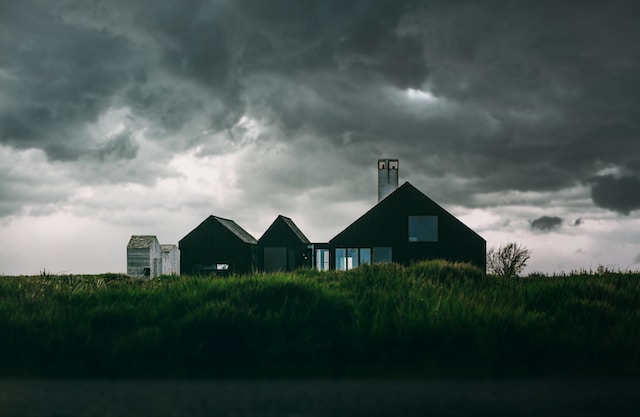The weather in the United States can be unpredictable and severe, especially in certain regions. From hurricanes in the Southeast to blizzards in the Northeast, many parts of the country experience extreme weather that can damage homes.
For example, Pittsburgh, Pennsylvania, tends to have cold, snowy winters and is prone to flooding when snow melts in the spring. It leads many Pittsburgh homeowners to renovate or repair their homes due to weather damage.
With the right preparations and home upgrades, homeowners can protect their most valuable investment from the ravages of weather. A well-maintained home can withstand even the most severe storms.
Below are seven tips to help homeowners protect their homes from damage caused by weather. Implementing even a few of these recommendations can greatly reduce the likelihood of having to pay for expensive repairs down the road.
1. Inspect and Repair the Roof
The roof is the first line of defense against outdoor elements, so keeping it in good shape is critical. In places like Pittsburgh, 21% of all properties have a greater than 26% chance of being affected by floods in the next 30 years. And the roof often bears the brunt of the weather changes.
Inspect the roof carefully at least once per year, looking for damaged or missing shingles, deteriorated flashing, and clogged gutters and downspouts. Make any needed repairs immediately to prevent leaks.
If you’re unsure about the condition of your roof, look up Pittsburgh Roof Replacement Company near me online to connect with local experts who can provide a thorough assessment.
Consider having a professional roofer inspect the roof’s overall integrity as well. Old roofs, especially in areas with harsh climates, may need replacement to handle heavy weather.
2. Install Impact-Resistant Windows
Upgrading to impact-resistant windows is one of the best ways to protect a home from storm damage.
Standard windows have glass that can easily shatter under pressure from flying debris, allowing strong winds and torrential rain inside. Impact-resistant windows have heavy-duty laminated glass designed to withstand impact. The reinforced window frames are also tested to withstand high wind loads and pressure.
Installing impact-resistant windows is highly recommended for homes in hurricane-prone regions, as they can prevent costly window breakage during storms. However, they also protect against hail damage, broken windows from fallen tree limbs, and even smash-and-grab burglaries year-round. While more expensive upfront, impact-resistant windows pay for themselves by preventing the need for window repairs and replacements over the years.
3. Seal Air Leaks
Drafts from air leaks can lead to bigger problems like moisture buildup, mold growth, and higher energy bills. But diligently sealing all gaps and cracks helps keep the home weather-tight and protected.
Use high-quality caulk and weatherstripping to seal around windows, doors, pipes, wiring holes, and other penetrations in walls and ceilings.
Pay extra attention to leak-prone areas like attic hatches, rim joists, fireplaces, and recessed lighting. A thorough sealing job keeps cold drafts out and prevents moisture intrusion into walls or attics.
Consider having an energy audit done to detect any hidden air leaks. Sealing air leaks also improves energy efficiency, saving on heating and cooling costs. The indoor air quality will also improve with tight air sealing and proper ventilation.
4. Install Storm Shutters
Storm shutters provide an extra essential layer of defense when winds, heavy rain, and flying debris are expected.
Temporary shutters made of plywood can be installed over windows and doors right before severe weather arrives. Permanent aluminum shutters are also a good investment, as they provide year-round protection without the hassle of taking them down repeatedly.
Both temporary and permanent storm shutters can prevent costly damage to windows and doors during major storms. They also provide increased security against break-ins when closed.
Test shutters annually and make any needed repairs if the hardware is loose or damaged. Storm shutters are a simple way to protect your home’s vulnerable openings from whatever the weather brings.
5. Update Entry Doors
High winds can easily damage flimsy doors, allowing rain and debris into the home. Consider installing wind- and impact-resistant fiberglass or steel entry doors, which are much more durable. Look for doors rated to withstand hurricane-force winds and impacts from flying debris.
Reinforced steel doors provide the highest level of protection. On the other hand, impact-resistant doors have heavy-duty hinges, brackets, and strike plates to prevent the door from blowing in.
6. Waterproof the Foundation
Leaks in basement walls and foundations can lead to flooding, mold growth, and structural issues. To prevent water intrusion through cracks and pores in the concrete, apply a sealant or waterproof coating to the exterior foundation walls.
Make sure proper drainage slopes water away from the home’s perimeter. Extend downspouts several feet from the foundation and fill in any low spots. Also, install a French drain system if the yard doesn’t drain well naturally.
Inspect the foundation walls annually for new cracks or deterioration of older repairs, sealing any breaches right away before small problems turn into expensive fixes.
7. Protect Plumbing Pipes from Freezing
Frozen and burst pipes can cause severe water damage in regions with cold winters. Insulating exposed water pipes in basements, attics, and exterior walls keeps them from freezing.
Caulk air leaks in crawl spaces to prevent freezing air from reaching pipes and disconnect and drain outdoor hose bibs and irrigation systems before winter. Make sure to maintain proper heat in the home even while away to keep indoor pipes from freezing.
In addition, learn how to shut off the main water supply so you can stop water flow quickly in the event of a ruptured pipe. Consider installing a whole-house generator to keep the heat and sump pumps running during power outages.
Conclusion
While no home is completely immune from weather damage, taking the right preventative measures can minimize the effects of severe storms, flooding, and freezing temperatures. Protecting the roof, windows, foundation, landscaping, and other vulnerable areas makes a home more resilient. Being proactive saves homeowners money over the long run by avoiding costly repairs. With smart preparation and regular maintenance, any house can be ready to stand strong against the toughest weather.










